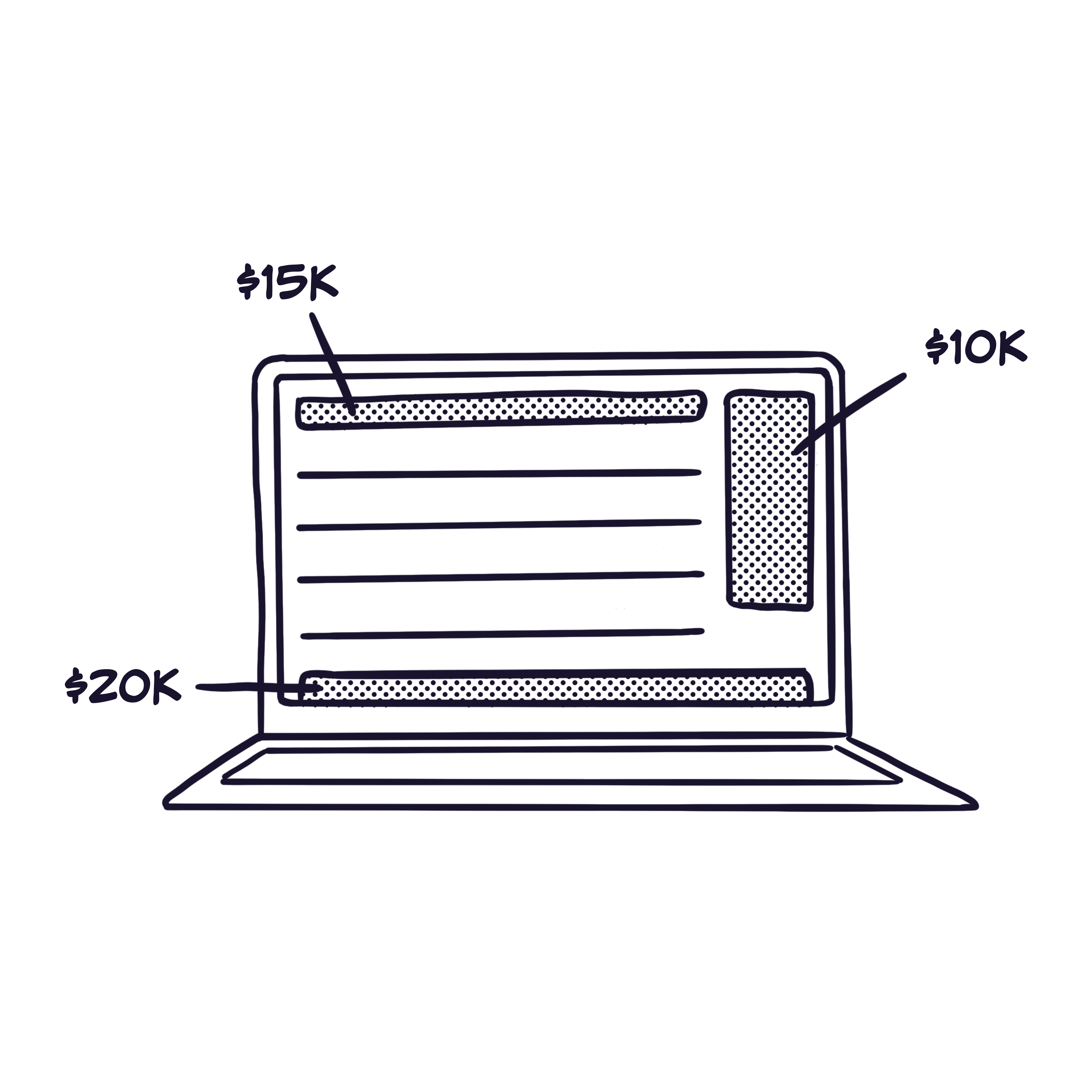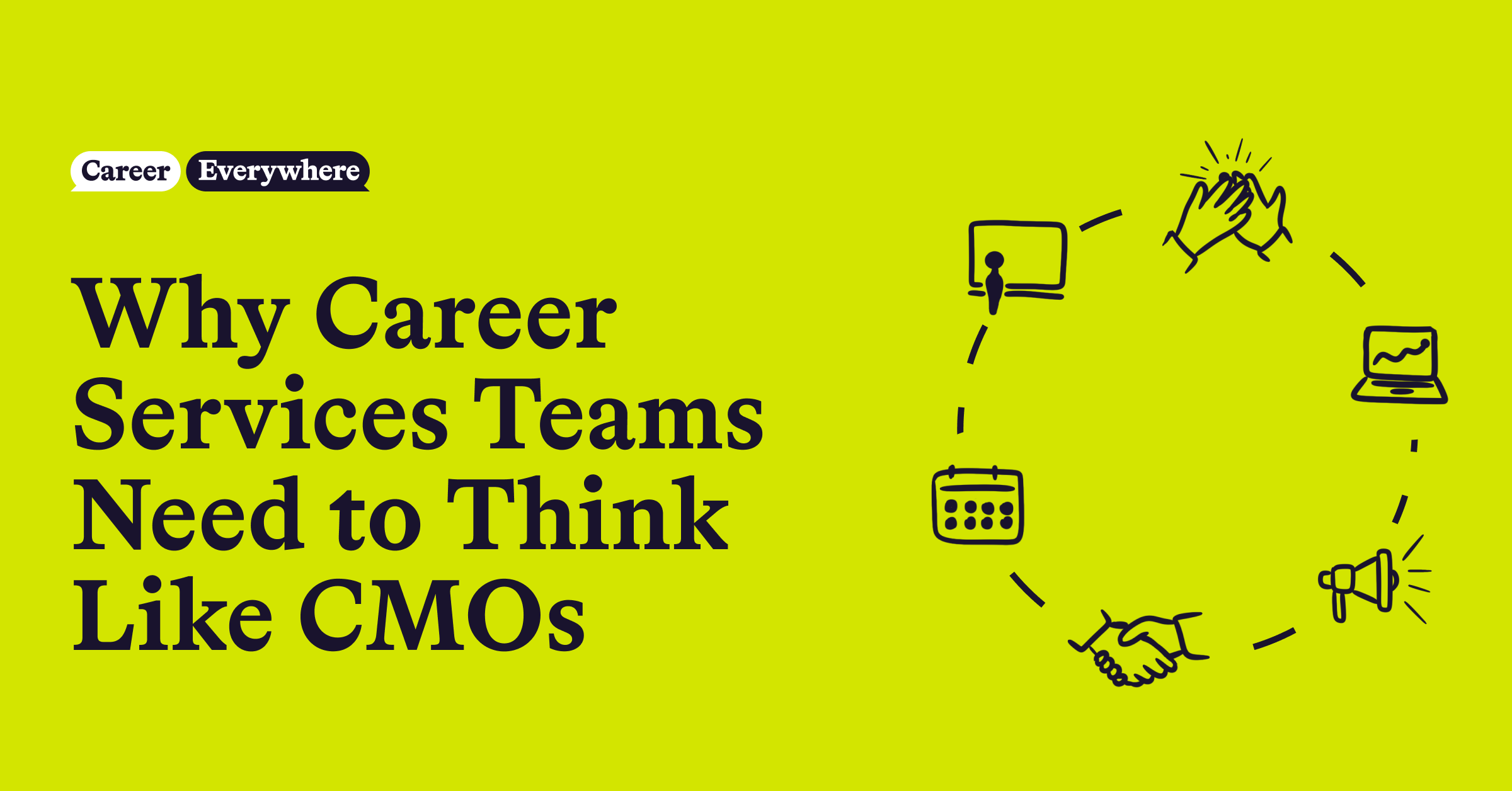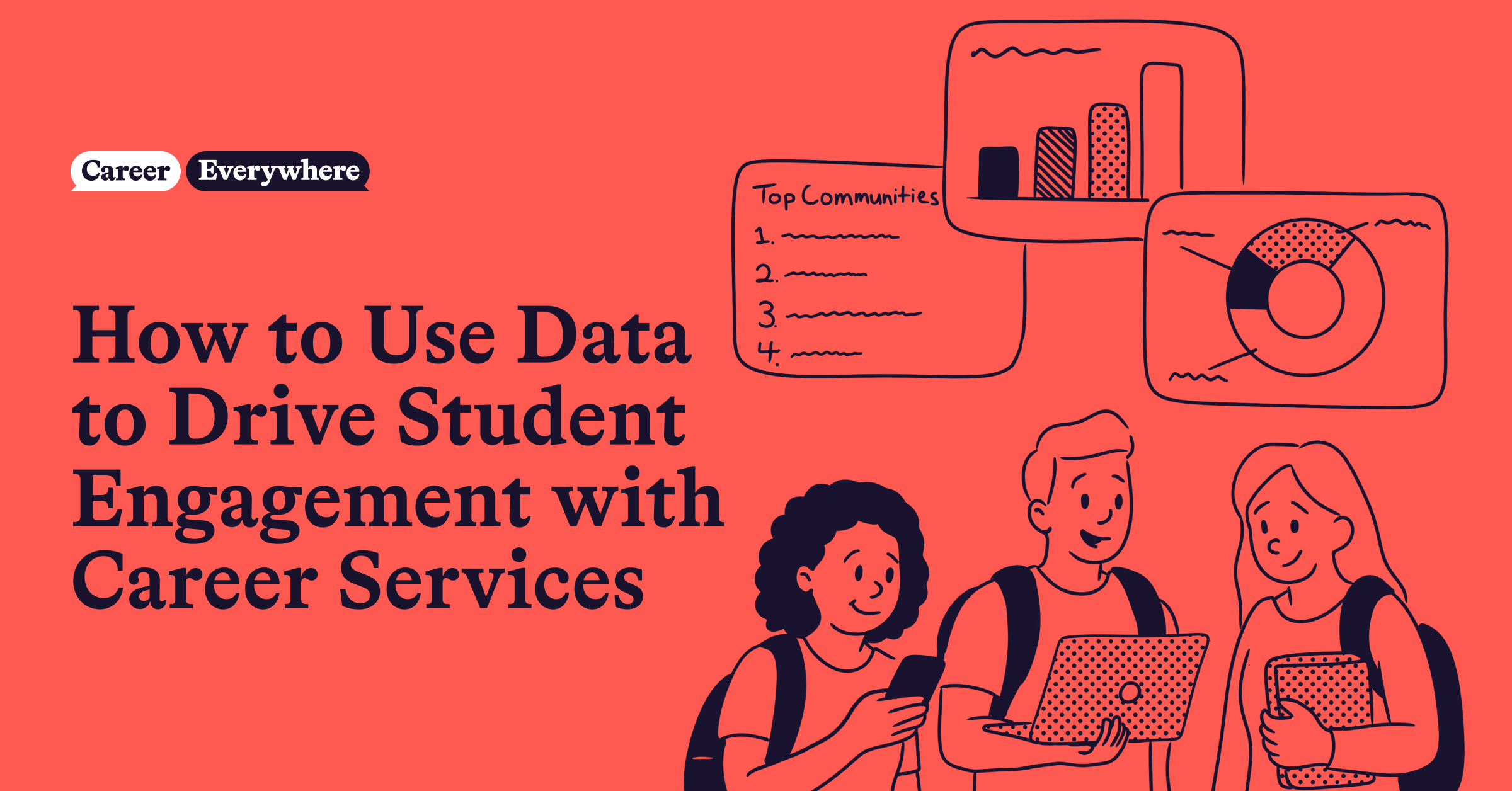
With budgets continuing to tighten at most schools—from small liberal arts colleges to large public universities—career services leaders are getting creative in how they fund technology for their career centers.
This includes everything from uConnect (an all-in-one virtual career center platform) to FOCUS 2 to Handshake, Symplicity, PeopleGrove, and more. Career centers are using all of these tools to engage more students.
We’ve worked with hundreds of career leaders over the last decade, and here are three common ways we’ve seen them increase their budgets and find extra money to buy the technology they need to better support students.
1. Digital corporate sponsorships
Many career services leaders are reinforcing their budgets by getting digital corporate sponsors for their career centers. And employers, increasingly struggling to connect with the next generation of talent, are eager to participate.
For example, Spelman College’s career center is sponsored by Carrier, Enterprise Holdings, Wells Fargo, and Morgan Stanley. University of Washington’s is sponsored by Alaska Airlines, AT&T, Pepsi, BECU, and Starbucks. Langston University’s is sponsored by Dell, Boeing, Hormel Foods, Paycom, and more.

Most digital corporate sponsorship programs involve a company donating a certain amount of money in exchange for sponsoring virtual events and/or having a digital presence in the physical career center (monitors, TV screens, etc.), on the website/virtual career center, or on social media.
Many career centers offer a variety of sponsorship tiers or packages, with different benefits and price points for each. Some have limits on how many sponsors they’ll accept, while others will accept any sponsor who wants to participate.
Digital corporate sponsorship programs can generate anywhere from a few thousand dollars in additional revenue to well over six figures. For example, Spelman College drove $60,000 in revenue last year through digital corporate sponsorships. And the University of Houston Bauer College of Business drove over $100,000 in revenue.
Not only do digital corporate sponsorship programs generate additional revenue for cash-strapped career centers, but they also expose more students to employers (and vice versa) earlier in their college journeys.
3 steps to get started
- Check out this 9-step guide to building a digital corporate sponsorship program for your career center. Be sure to check out the four examples at the end.
- Decide how you want to structure your program (how much revenue are you hoping to drive, how many sponsors can you reasonably accommodate, what types of sponsorship packages do you want to offer, etc.).
- Make a list of potential sponsors (who’s hired your students in the past, who are the top employers in your state, which companies are hiring for roles that align with your school’s top programs, etc.). Then start reaching out. (And maybe loop in your colleagues in advancement if you think it makes sense)
Learn how to build a digital corporate sponsorship program for your career center with our 9-step playbook.
2. Student tech fee grants
Many institutions ask students to pay a “tech fee” as part of their tuition and fees, and that fee goes into a pot of money that can be used to help different departments on campus onboard new technology to serve students.
Here’s how the process typically works: Career leaders apply for funds (or grants) from the student tech fee committee, most often comprised of student government leaders who decide how to allocate the money. Career leaders submit an application, ask for a certain dollar amount, and make their case that the new technology will help them better support students in their career development. The committee then votes yes or no on the application.
Both the University of Washington and the University of Florida career teams funded new technology (their uConnect virtual career centers) this way.
Briana Randall, the Executive Director of the Career and Internship Center at the University of Washington, said she first applied for one year of funding for the uConnect platform in 2021 and got it. She successfully applied again for one year of funding in 2022, and then in 2023 applied for perpetual funding—and got it. Now, the student tech fee will always cover UW’s uConnect platform.
“I’m not going to get money for staff. And I view our website more or less as a staff member. So I can’t have more staff, but I can have a website, and I can probably get somebody else to pay for that technology. So that’s been part of our strategy is to look for funding elsewhere that might be easier to get than funding for FTE,” Briana said.
Check out the University of Washington’s student tech fee application here.
Julia Vollrath, the Associate Director for Campus Initiatives and Career Pathways at the University of Florida, said her team focused on leveraging their student engagement data for their student tech fee grant application and crafting a powerful narrative around it. According to their data, Vollrath said that FOCUS 2 (an online career assessment technology) was one of their most commonly used tools. They used their data around how many FOCUS 2 users they have, how many students are engaging with the center on average, how many staff members the center has, what that looks like in a 1:1 appointment situation, and more.
“We said, ‘If we use uConnect, we’ll be able to increase access to all of the other technologies that we have in the career center by removing barriers and having it all in one place,’” Vollrath said.
Vollrath said the student tech fee committee loved all the data points the career center included, along with the Labor Market Insights module (powered by uConnect) Vollrath and her team wanted to add to their uConnect platform.
“All of that put together was a really great narrative that students really latched onto and were really excited to have this access and be able to have this resource,” Vollrath said.
3 steps to get started
- Find out if your institution has a student tech fee grant program (and when the application period is).
- Download the University of Washington’s 2023 student tech fee grant proposal to see an example of a successful application.
- Draft your own proposal with information about why your team needs a specific technology, how it benefits students, how they will use it, how many students can be reached with it, how much money you need, and more.
Learn more from Julia Vollrath about how her team uses data to measure student engagement in this episode of the Career Everywhere podcast.
3. Cost-sharing with other departments
If money is tight, but the technology you’re looking to buy could benefit another department on campus, see if you can cost-share! That’s what the University of Arizona career services team did when they bought uConnect.
The University of Arizona Student Engagement and Career Development (SECD) team has had a longstanding partnership with the alumni office to support recent graduates. So when Emily McCarthy, the Senior Director of Career Development at the University of Arizona, wanted to buy uConnect’s virtual career center platform to replace their website, she approached her counterpart in the alumni office to see how both teams could benefit.
It quickly became clear that there were enough similarities between career development support for current students and alumni that it made sense for both offices to share one website (powered by uConnect). As a result, the career center and the alumni office decided to share the cost of the uConnect platform, making it more affordable for both teams.
Now University of Arizona students and alumni all have 24/7 access to the same wide variety of career resources and opportunities—all in one place.
“It just made sense to both of us to have one site that students can use throughout their full life cycle,” McCarthy said. “And what I love about uConnect is, and I promise this is not a paid endorsement, the content is so scalable, but it feels really personal.”
We’ve also worked with career teams that have partnered with admissions to share the cost of a student-, parent-, and prospect-facing virtual career center website (powered by uConnect). That way, career teams can get prospective students thinking about career before they’re even enrolled, and parents can feel confident their students will be prepared for life after college.
For example, the Illinois Institute of Technology drove record enrollment by centering their recruitment strategy around career readiness.
3 steps to get started
- Consider which departments might make good partners (enrollment/admissions and alumni are two common places to start)
- Craft a proposal with information about the technology, its benefits to both departments, its benefits to students, dollar value, etc.
- Reach out to your potential partner with your proposal. Offer to include them in a demo call with the technology vendor.
Learn more about how the University of Arizona career team partners with alumni in this episode of the Career Everywhere podcast.
Conclusion
For many career centers, technology is the only way to scalably reach the thousands of students they are entrusted to serve. It’s no longer just a nice-to-have; it’s a necessity. Unfortunately, most career center budgets haven’t increased commensurately to accommodate the need for more technology.
While there’s always the option of trying to negotiate a specific line item in your annual budget for technology, many career centers use the aforementioned three strategies to supplement their budgets and buy the tech their students need to succeed.
If you’d like to learn more about uConnect, fill out the form below to schedule a demo.


